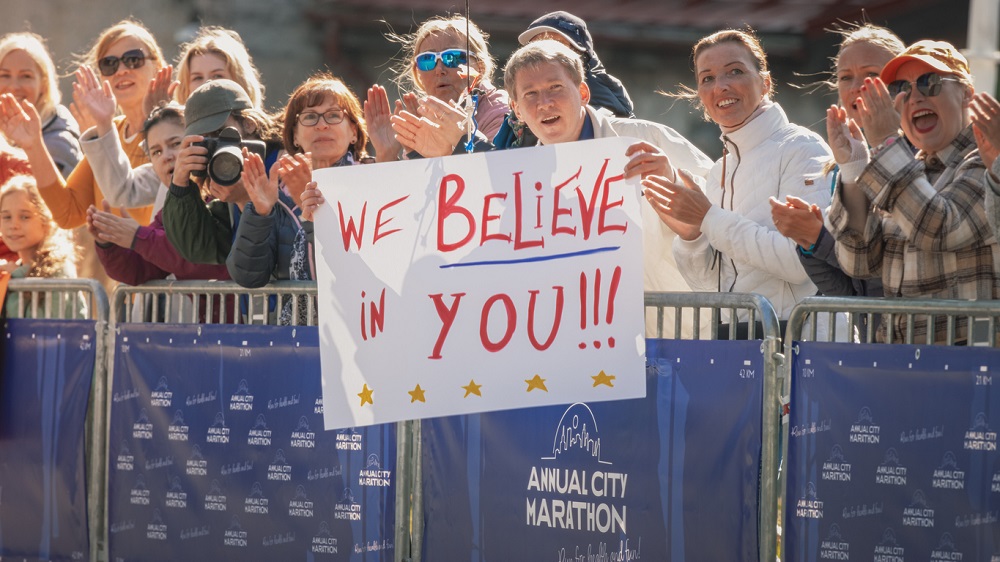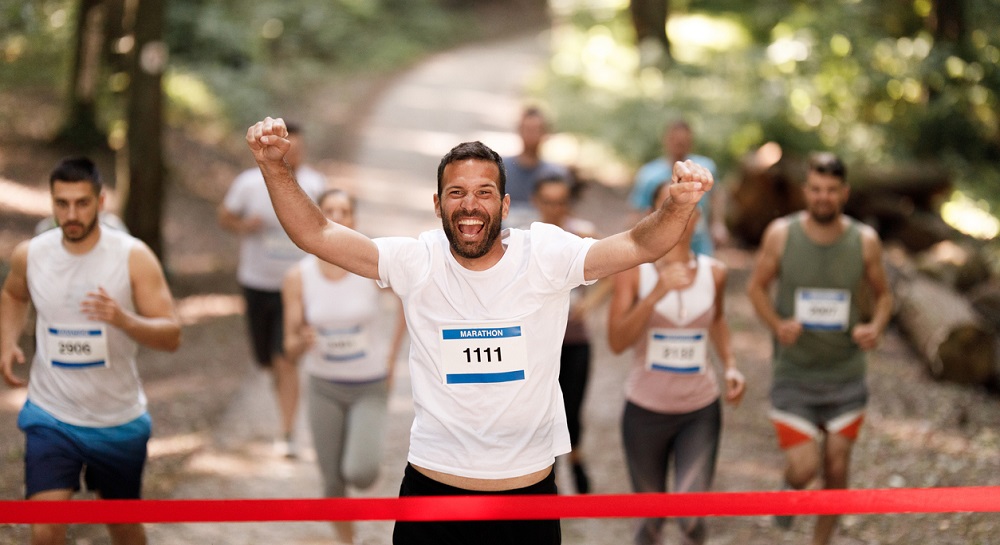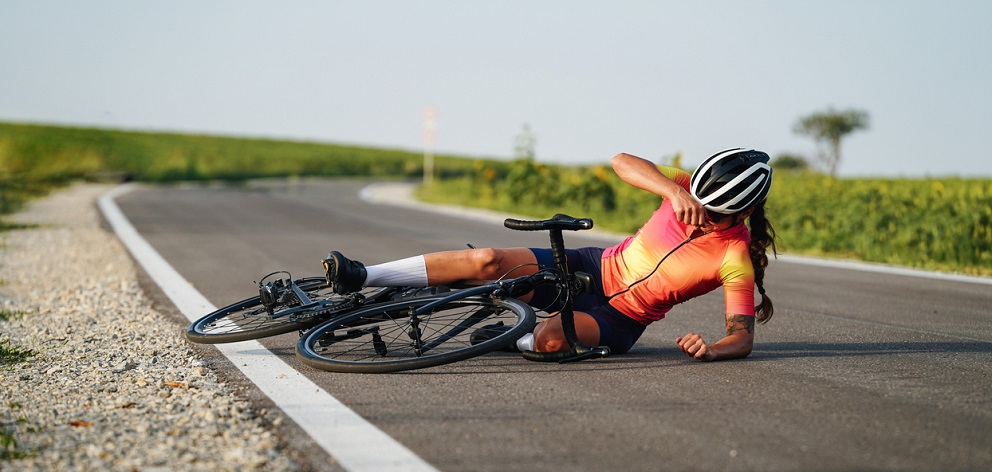← Back to Articles
Video security at Ironman Tallinn, the Copenhagen Marathon, and other triathlons and races

The aftermath of the Boston Marathon bombings that shocked the world in 2013 and left almost three hundred people injured naturally led to a call for increased security during such large-scale public events.
Enhanced security measures, both visible and undercover, are now a common sight at the Ironman Tallinn triathlon, scheduled in Estonia for August 23, 2025, or the Copenhagen Marathon held annually every May in Denmark – and at many other marathon sporting events. World-renowned organizers prioritize the safety of athletes and spectators and are committed to uphold the high standards of these races.
Although often associated with indoor usage, video surveillance systems have become a crucial component of safety at marathons, triathlons, and other racing competitions.
Thanks to breathtaking technological advancements, modern video security systems provide effective solutions to challenges at various sporting events.
Terrorist attacks prevention
Large distance coverage: Paired with increased police presence, video surveillance can aid in patrolling along routes, at entrances, and in surrounding areas. Pan-tilt-zoom cameras with big image resolutions can be used as overview cameras, while the guard tour function can rotate the camera to cover all spots of interest.
Facial recognition: Contemporary video surveillance incorporates artificial intelligence technologies for smart video analytics, such as face recognition. Video cameras can be used not just to record events but to do proactive scanning of faces of people in sight and compare them to police databases of wanted criminals. Beyond stationary units, cameras can be mounted in vans placed along the route or on drones flying between the start and finish lines.
Detection of suspicious bags: Detection of abandoned items is a robust instrument in video surveillance that uses background subtraction to automatically note unattended bags, boxes, or other suspicious objects. Smarter versions of this tool can be trained to ‘recognize’ specific types of objects based on how those typically look, while they are still being carried by a perpetrator.
Weapons detection: In states where open carry is prohibited, AI-powered mechanisms of video surveillance can flag weapons (explosives, melee, firearm, etc.) at access points.
Crime prevention
Pacifying effect: Video security cameras installed at stadiums in Sweden have led to a drastic decrease in fan misconduct – 65% fewer violent outbreaks compared to stadiums without CCTV. Similar calming influence is effective at races, too. When being watched, even by a robot eye, people tend to resolve their conflict in a milder manner.
Behavior analysis: Another video analytical task that contemporary video surveillance can perform is behavior analysis. They can read emotional states of people in sight and single out individuals showing alarming levels of anger or fear.
Identification of prior offenders: Offenders that were caught causing trouble in the past events can be blacklisted and denied entrance to future competitions or at least closely monitored. Besides, proper identification can help officials press charges against vandals, thus helping reimburse for the damage done.
Pickpocketing protection: Similar to the soothing effect on what otherwise could be a violent scene in a conflict, video cameras can prevent opportunistic crimes like pickpocketing. The real possibility of being caught red-handed is often enough for potential criminals to reconsider and refrain from committing a crime.
Thermal imaging: Contemporary video cameras provide thermal imaging and night vision capabilities so they stay functional in low-light or poor weather conditions.

Incident tracking
Quick reaction to incidents: Marathons and triathlon events span vast distances. For example, the Copenhagen Marathon course stretches for 26.2 miles (nearly 42.2 kilometers) and Ironman Tallinn is a full-distance triathlon amounting to 140.6 miles (226.4 kilometers). Tracking every athlete across such distances is challenging. However, video surveillance at marathons and triathlons nowadays combine drone surveillance and fixed cameras along the course, allowing to detect medical emergencies (cyclists falling, swimmers drowning) and other incidents for race officials to respond quickly to – for example, by rapidly dispatching medical teams.
Anti-cheating: Since both the Copenhagen Marathon and Ironman Tallinn are used as a qualifier for the Boston Marathon, the hype and the stakes are high enough for some athletes to consider cheating at some point of the route. Full-distance coverage with the camera network results in full exposure, making it hard to cheat.
Post-race analysis: Timelapse reviews help organizers identify bottlenecks and obstructions and optimize the course for future events.
Incident investigation
24/7 or event-triggered recording: Advanced video surveillance systems do not require Cloud computing – they operate completely on the on-site equipment and consequently impose no artificial limitations on storage, which could amount to terabytes of recordings for 24/7 monitoring. Event-based recording can save space by only capturing moments of activity.
Off-site storage: For increased protection of video evidence, various tools are available in video surveillance to off-load footage to safe off-site destinations, be it Cloud services, network disks, or an FTP directory.
Forensic uses: In many cases, video footage from today’s video surveillance systems at marathons, triathlons, and other races is accepted in legal proceedings as irrefutable evidence that provides unbiased insight on how events unfolded and the opportunity to identify culprits.
Bonus points: beyond security
Video surveillance in the modern world is not just a security tool. Smart video analytics behind the camera lens are also a great statistics and marketing tool.
Know your audience:
– Tools like visitors counter can help gather statistics on attendance.
– New customers can be counted separately to evaluate the effectiveness of ads and promo efforts.
– Demographic breakdowns of event visitors by age and gender provide further insights.
– Crowd density can be monitored with analytics tools like Crowd Detector or Parking Spots.
– Viewers satisfaction level with the experience can be estimated with the Emotion Detector module that ‘sees’ emotions.

Promotional potential:
– Use footage and live streams that capture the heated atmosphere, rollercoaster emotions, and adrenaline spikes in marathons, triathlons, and other races to create trending clips with memorable highlights.
– Restream cameras to YouTube with automated camera switching for dynamic coverage.
– Promote your event with unedited footage to showcase transparency and athlete-friendly organization.
Real-world examples of video security benefits in marathons and triathlons
London Marathon: Known for its massive CCTV presence following terrorist attacks, the UK is one of global leaders in ensuring video security with all-seeing cameras. In the London Marathon CCTV was mostly used for traffic management, spectator safety, and post-race analysis. These measures helped ensure the safety of runners, manage crowd flow, and apply improvements to future events of the series.
New York City Marathon: Video surveillance systems in the New York City Marathon focused on real-time incident detection to optimize medical response times. Besides, extensive crowd management measures helped manage crowds in spectator areas more effectively.
Triathlon World Championship is a great example of advanced CCTV technologies. First, the organizers introduced drone surveillance for broader aerial views of the route for officials. To add to that, underwater cameras are being explored for monitoring swimmers in open water, all while GPS tracking data is integrated to deploy rescue missions effectively.

The importance of video security systems at marathons, triathlons, recapped
Video security systems have proven to be more than just a monitoring tool at mass sporting events. From deterring terrorism and crime to detecting emergencies and aiding investigations, they are more like a fundamental component of security strategy.
Equally important, surveillance technology enhances the experience for both athletes and spectators. With better crowd management, quicker responses to incidents, and even marketing insights, it helps organizers deliver safe, smooth, and memorable events. It’s safe to say that video security solutions like Xeoma protect, inform, and improve the very spirit of endurance racing.
Have other ideas about how video surveillance can be used in marathons and triathlons? Share them in
Xeoma’s Reddit community
FREE TRIAL OF XEOMA
Try Xeoma for free! Enter your name and your email to send the license to in the fields below, and click the ‘Get Xeoma free demo licenses to email’ button.
We urge you to refrain from using emails that contain personal data, and from sending us personal data in any other way. If you still do, by submitting this form, you confirm your consent to processing of your personal data
August 19, 2025
Read also:
How CCTV keeps the Tour de France, La Vuelta and Arctic Race of Norway safe&secure
FIFA World Cup: stadium security is important, but safety is primary
Video monitoring in tennis: How CCTV accompanies major tennis championships
Video surveillance system at sports building
Racing: video surveillance on Formula 1 World Championship



